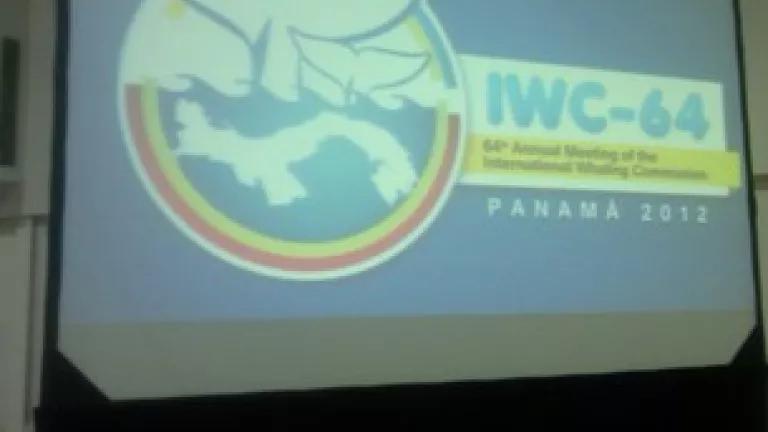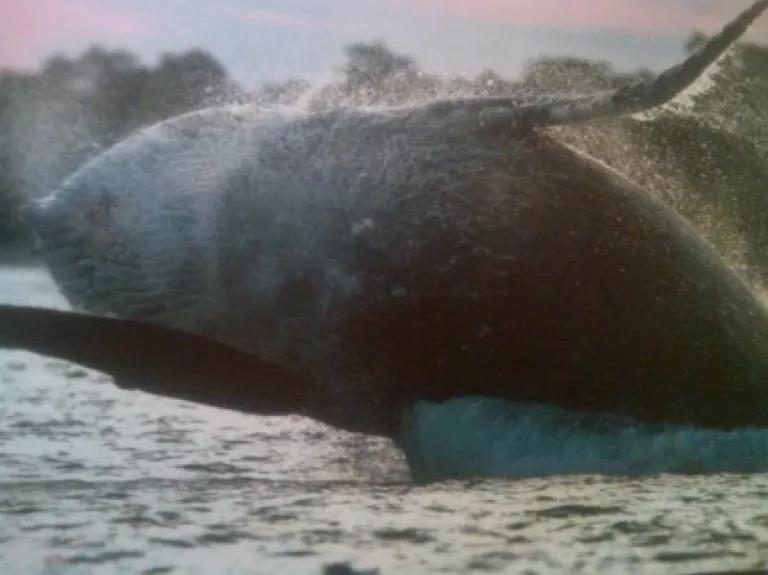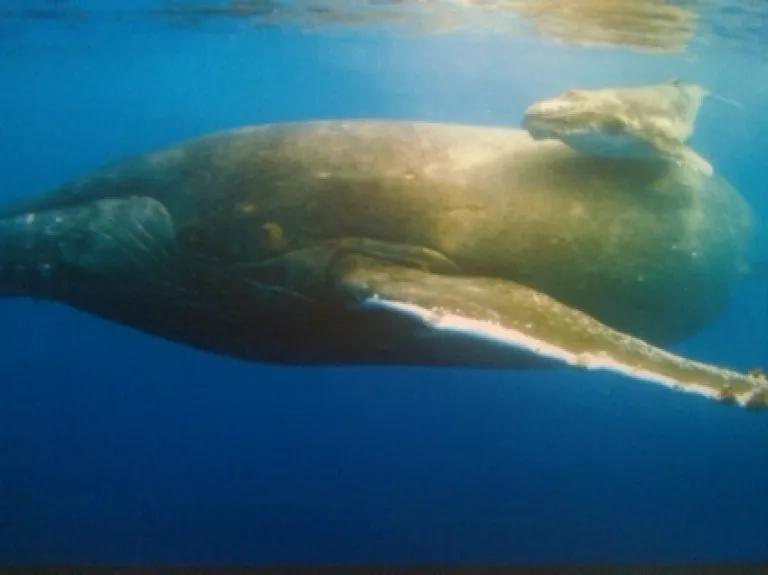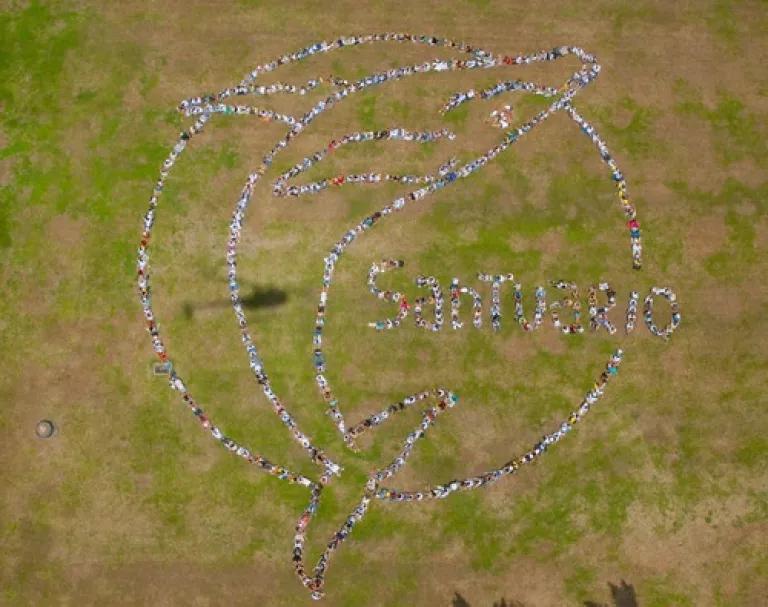
I had the honor of representing the voices of nongovernmental organizations on the United States Delegation to the 64th annual meeting of the International Whaling Commission (IWC) held this week in Panama City, Panama. But when all is said and done, I was here to represent those that cannot represent themselves: the whales. As this long – and often times contentious – meeting comes to an end, I’ll take time to reflect on the good, the bad, and the ugly.


The Good
While this week was not a success by anyone’s standards, great strides were taken to further the conservation of whales. I’ll highlight a couple triumphs near and dear to my own heart:
- Ocean noise. The United States reported on – and the Scientific Committee endorsed – domestic efforts to map underwater sound-fields and cetacean distribution to provide decision makers with the necessary information to reduce potential impacts on cetaceans. NRDC hopes this mapping will be used to develop precautionary measures to protect marine mammals from the harmful impacts of anthropogenic ocean noise. We’re urging the expansion of these mapping tools beyond U.S. waters and across the world’s oceans. To that end, the U.S. led a successful effort to establish an intersessional group to work to address this – and other – ocean noise issues.
The Scientific Committee also reported on the issue of ocean noise, highlighting, among other things, that beaked whales are particularly vulnerable to military sonar and oil and gas activities.
- Disentanglement. The United States reported on its efforts to train other countries in disentanglement techniques. The U.S. announced that they would continue working with Argentina and Brazil on capacity building and training in relation to disentanglement response. Sadly, over 300,000 marine mammals die every year entangled in fishing gear and other marine debris.
- Marine debris. The Scientific Committee and Conservation Committee will sponsor a workshop to better understand population-level effects, identify mitigation measures, and develop a centralized database to obtain more accurate estimates of the incidence of mortality and injuries and help detect trends over time and identify hotspots.
- Small Cetacean Voluntary Fund. Scientific Committee Chair Debi Palka reported continuing progress regarding the initiatives funded by the Small Cetacean Voluntary Fund.
In addition, the Commission passed – by consensus – a resolution presented by Cyprus on behalf of the European Union that recognizes the significant health effects of consuming some cetaceans and encourages further cooperation with the World Health Organization to exchange information.
The United States also secured its aboriginal subsistence whaling quota, which comes before the Commission every five years for review. While this isn’t good for bowhead whales, it is good for the Alaska Eskimo hunters who rely on bowhead whales for their subsistence needs.
The Bad
The Commission voted to reject the South Atlantic Whale Sanctuary. This was the first vote I’ve ever witnessed at the IWC, and it was very disappointing. The proposal, championed by Latin American member countries, would have created a whale sanctuary in the South Atlantic. Although the proponents made a strong case for establishing the sanctuary and fewer countries voted against it than in past years, the proposal only gathered 64 percent of the vote – not the required 75 percent to pass. NRDC has supported the South Atlantic sanctuary proposal since its inception, recognizing the importance of sanctuaries and other marine protected areas to the conservation of marine mammals. While it’s hugely disappointing that the Commission voted down the South Atlantic Whale Sanctuary, it is a good thing the Commission started voting again!

Hundreds gathered along the Panama Canal and formed a giant human whale with the message “Santuario” (sanctuary) to call for the creation of the Southern Atlantic Whale Sanctuary at the 64th annual IWC being held in Panama City as part of the Save the Whales Again! Campaign.
In another vote, the Commission voted 34-25 to reject Denmark’s proposal for an increase in aboriginal subsistence whaling catch quotas for Greenland. The proposal would have allowed indigenous people in Greenland to hunt up to 1,326 whales between 2013 and 2018 – including humpback, minke, fin and bowhead whales. After extensive debate on the floor, countries seemed most concerned with the fact that Greenland was requesting an increase in quota when some of that hunt is admittedly used for commercial – rather than subsistence – purposes. A recent study by the Animal Welfare Institute and the Whale and Dolphin Conservation Society found that 77 percent of restaurants in Greenland serve whale meat, much of which goes to tourists. The United States backed Greenland’s quota, rejecting concerns about the commerciality of the catch raised by many nongovernmental organizations and contracting governments. While it seems like a good thing that the Commission rejected a potential commercial hunt, it leaves the issue up in the air for Greenland to decide unilaterally. What will Greenland do? Some speculate it might leave the IWC. Greenland’s envoy Amelie Jesses hinted that Greenland might do so. Denmark’s Commissioner Ole Samsing suggested that Greenland would unilaterally set its own quota: "We will go home and reflect on what should be done as regards the future." It would be bad for the whales if Greenland unleashes it harpoons without IWC review, using quotas not approved by the Scientific Committee.
Monaco’s proposal to encourage cooperation between member states and the United Nations in order to protect small cetaceans and highly migratory species also failed. Monaco Commissioner Frederic Briand introduced the resolution to address “chronic gaps in legal instruments regarding the conservation of highly migratory species.” The UN defers to the IWC when it comes to whales, but the IWC has only developed management plans for 15 species and specifically exempts small cetaceans, such as dolphins. When it was clear that the proposal would be harpooned by pro-whaling countries, Monaco did not request a vote. Instead, Commissioner Briand stated his intent to convene a “platform” for interested countries to consider possible synergies and cooperation with the UN.
The Downright Ugly
Japan submitted a proposal to legitimize its “small-type coastal whaling.” The Japanese proposal is – pure and simple – a request for an exemption to the moratorium on commercial whaling. Australian Commissioner Donna Petrachenko delivered the best rejection: "This is commercial whaling, clear and simple." Japan responded to the serious opposition to its bid for coastal whaling, by posturing to leave the Commission if the issue is not resolved in the next meeting.
Japan’s proposal for coastal whaling would be in addition to its ongoing “scientific whaling.” Exploiting a loophole in the Convention for scientific permits, Japan kills whales to study them – and then sells the meat in supermarkets and restaurants.
Apparently wanting what Japan’s got, Korea announced its intention to conduct its own lethal scientific research. Citing its long history of coastal whaling – and comparing this whaling to ongoing aboriginal subsistence hunts in Alaska, Russia, and Greenland – Korea declared its intent to commence lethal scientific whaling at the request of its fishermen in and near Ulsan. Korea would conduct its “research” on minke whales – a depleted species already undergoing extensive review by the Scientific Committee. Korea’s proposal met with instant opposition by whale-friendly nations. New Zealand Commissioner Gerard van Bohemen delivered the best response, noting killing an already depleted population of minke whales to “study” them is “unnecessary and borders on the reckless.”
In Conclusion
While it’s easy to focus on the bad – and the ugly – I consistently remind myself not to lose sight of the real reason I go to the IWC every year: to protect whales. Although IWC 64 has concluded, NRDC will continue fight for the whales.
Aerial photo courtesy of Jeff Pantukhoff/Spectral Q/Whaleman Foundation
All other photos: displayed at the IWC

